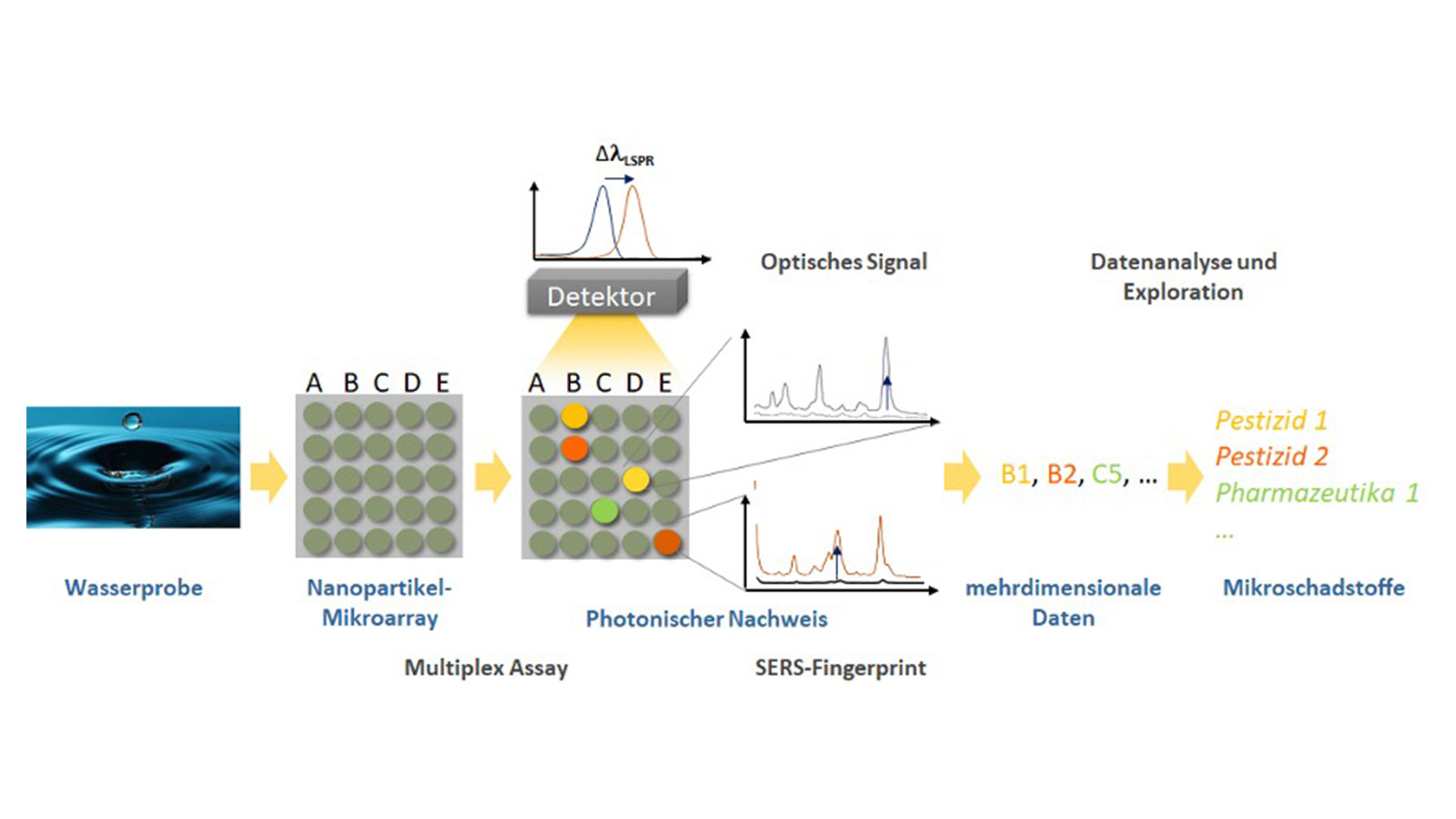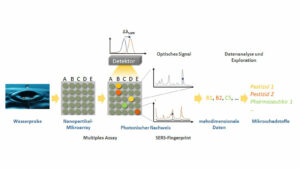- Home
- Research
- Spectroscopy and Imaging
- Projects
- MIKA
MIKA

On-site determination of micropollutants in wastewater samples using plasmonic multiplex assays and combined fingerprint analysis
Runtime: 15.04.2023 - 14.04.2026
MIKA is focused on the development of an innovative detection method for micropollutants in water. The basis for the efficient detection of different pollutant classes is realized by combining a noble metal nanoparticle array with a molecule-selective method. The nanoparticles are arranged as spots in an array and functionalized with aptamers. These DNA-based receptors bind selected lead indicators of contamination in wastewater samples: carbamazepine, diclofenac, and benzotriazole. Binding to the aptamer receptors occurs by molecular affinity and provides initial information about contaminant class and molecular properties. Binding is detected in the visible spectral region by using a novel detector unit with spatially resolved imaging spectroscopy. The complex spectral imaging data are analyzed using AI to provide a rapid indication of receptor binding and thus molecular class. This measurement method is label-free and perspective on-site capable. In addition, specificity is enhanced by the use of surface-enhanced Raman spectroscopy (SERS), based on the detection of molecular fingerprint information. Here, the noble metal nanoparticles serve as amplifiers of the molecularspecific Raman signal. The MIKA project brings together regional partners to jointly enable on-site detection of micropollutants.
More information about the project: https://www.thwic.uni-jena.de/
Partners







